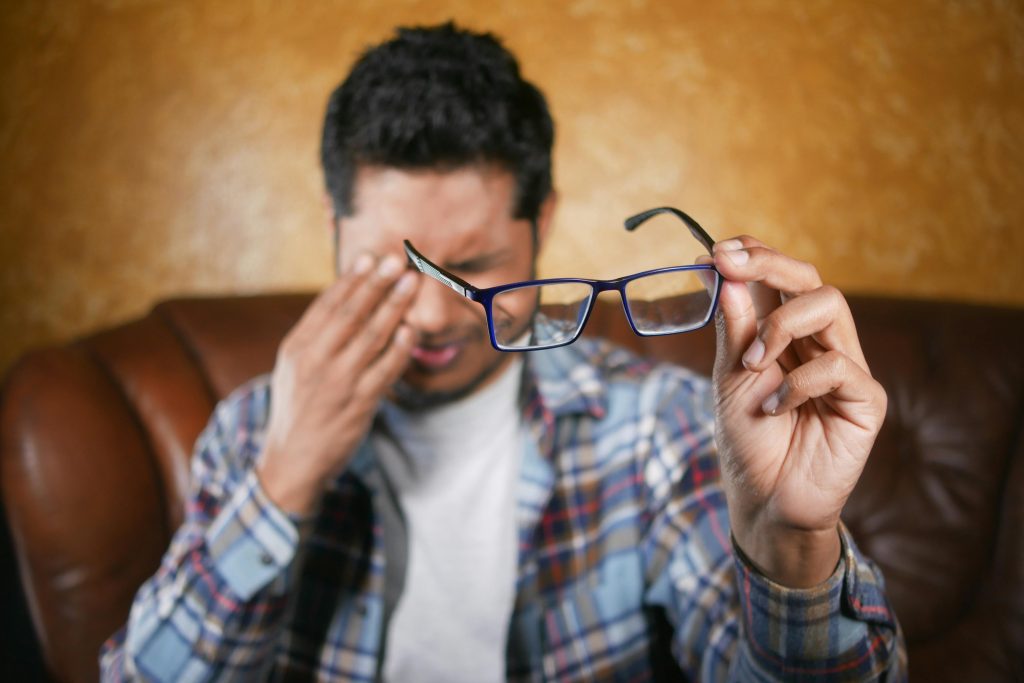Screens have become an indispensable part of daily life in our hyperconnected world. Whether for work, education, or entertainment, many of us spend countless hours staring at computers, smartphones, tablets, and televisions. While these devices offer undeniable convenience and utility, they also come with a less desirable side effect—digital eye strain (DES), also known as computer vision syndrome (CVS).
Digital eye strain refers to a collection of eye and vision-related problems resulting from prolonged exposure to digital screens. Symptoms can include eye discomfort, headaches, blurred vision, dry eyes, neck and shoulder pain, and even difficulty focusing. With an ever-increasing reliance on digital devices, it’s more important than ever to understand how to prevent and manage digital eye strain effectively.
In this blog post, we’ll explore the causes of digital eye strain, the impact it has on our health, and practical strategies for reducing and preventing its effects.
The Causes of Digital Eye Strain
The root cause of digital eye strain lies in the way our eyes interact with screens. Human eyes are not naturally adapted to long periods of screen use, and the following factors contribute to eye strain:
1. Prolonged Focus at a Fixed Distance
When you look at a screen for extended periods, your eyes remain focused on a near-fixed distance, which leads to fatigue. Unlike looking at objects at varying distances, staring at a computer or phone requires the eye muscles to stay contracted over time, increasing the demand on these muscles and causing strain.
2. Reduced Blink Rate
Studies show that people blink less frequently when using digital devices. Normally, humans blink around 15-20 times per minute, but this rate can drop by half when staring at screens. Blinking helps to moisten and lubricate the eyes, and when we don’t blink enough, our eyes can become dry, irritated, and fatigued.
3. Blue Light Exposure
Digital screens emit blue light, which has shorter wavelengths and higher energy than other visible light. While blue light is present in natural sunlight, overexposure from screens—especially during nighttime—can disrupt sleep patterns and cause discomfort in the eyes. Some research also suggests that long-term blue light exposure may contribute to retinal damage over time.
4. Glare and Poor Lighting
Glare from screens or reflections can force your eyes to work harder to see clearly. Poor lighting conditions, such as dim or excessively bright surroundings, can further strain your eyes, especially when there is a stark contrast between the screen’s brightness and the ambient light in the room.
5. Improper Viewing Distance and Posture
Sitting too close to or too far from a screen, along with poor posture, can also contribute to eye strain. When you’re too close, your eyes have to work harder to focus, and if you’re too far, the text or images on the screen may be too small, leading to squinting and discomfort.
Join Our Mailing List
Register now to get our hints and tips newsletter directly to your inbox
The Impact of Digital Eye Strain
While digital eye strain may seem like a minor inconvenience at first, its impact on health and productivity can be significant. Some of the most common symptoms include:
- Eye Discomfort and Fatigue: A feeling of tired, sore, or irritated eyes after prolonged screen use.
- Headaches: Straining to focus on screens can lead to tension headaches, particularly around the temples or forehead.
- Blurred or Double Vision: Difficulty maintaining clear vision while shifting focus between the screen and other objects.
- Dry or Red Eyes: Due to decreased blinking, the eyes may become dry and irritated, leading to redness and discomfort.
- Neck and Shoulder Pain: Poor posture while using screens can cause muscular strain in the neck, shoulders, and upper back.
The effects of digital eye strain are not limited to physical symptoms. For many people, these symptoms can lead to a decrease in productivity at work, difficulty concentrating, and even reduced enjoyment of leisure activities like reading or watching movies.
Preventing Digital Eye Strain
Fortunately, there are several ways to reduce and prevent digital eye strain, allowing you to maintain both your eye health and productivity. Here are some practical tips to help protect your eyes in a screen-dominated world.
1. Follow the 20-20-20 Rule
One of the simplest and most effective strategies for preventing eye strain is the 20-20-20 rule. Every 20 minutes, take a 20-second break and look at something 20 feet away. This allows your eye muscles to relax and reduces the strain from focusing on a screen for extended periods.
2. Maintain Proper Ergonomics
Your viewing habits and posture play a crucial role in minimizing eye strain. Here are some ergonomic guidelines to follow:
- Screen Distance and Height: Position your screen about an arm’s length (20-24 inches) away from your eyes. The top of the screen should be at or slightly below eye level, so you don’t have to tilt your head up or down.
- Adjust Text Size and Contrast: Increase the size of text or adjust the contrast settings on your device to make content easier to read without straining your eyes.
- Chair and Posture: Sit in a comfortable, supportive chair with your feet flat on the floor, knees bent at a 90-degree angle, and your back straight. This helps prevent neck and back strain, which can exacerbate eye strain.
3. Optimize Lighting
Your environment should have appropriate lighting to minimize glare and reduce the contrast between your screen and the surrounding area. Here are some tips:
- Avoid Excessive Brightness: Dim your screen to a comfortable brightness level, avoiding overly bright screens, especially in low-light conditions.
- Reduce Glare: Position your screen to avoid reflections from windows or overhead lights. You can also use anti-glare screen protectors to reduce glare from the screen itself.
- Consider Task Lighting: Use task lighting for reading or other close-up activities to reduce reliance on your screen for illumination.
4. Use Blue Light Filters
Many devices now come equipped with blue light filters, which reduce the amount of blue light emitted by your screen. You can enable night mode or use apps that gradually reduce blue light exposure in the evening. Alternatively, you can use blue light-blocking glasses, which filter out blue light and reduce eye fatigue.
5. Take Regular Breaks and Blink More Often
Remember to take breaks from screens throughout the day to give your eyes a chance to rest. Try to consciously blink more often, especially when you notice your eyes feeling dry or irritated. You can also use lubricating eye drops to relieve dryness and provide moisture to your eyes.
6. Adjust Screen Resolution and Refresh Rate
Modern displays often come with high-resolution screens and fast refresh rates, which can reduce eye strain. Higher resolution screens make text and images sharper, reducing the effort required for your eyes to focus. A higher refresh rate also decreases flickering, which can cause strain over time.
7. Stay Hydrated and Maintain a Balanced Diet
Your overall health can affect your eye health. Stay hydrated throughout the day, as dehydration can exacerbate dry eyes. Additionally, eating a diet rich in omega-3 fatty acids, antioxidants, and vitamins A, C, and E can support eye health and reduce the risk of vision problems.
8. Consider Regular Eye Exams
If you spend a significant amount of time in front of screens, regular eye checkups are essential. An eye care professional can identify any underlying issues, such as uncorrected vision problems, that may be contributing to your eye strain. They can also recommend glasses or contact lenses specifically designed for screen use.
The Future of Eye Health in a Digital World
As digital technology continues to advance, so too will the challenges associated with prolonged screen use. While it may be impossible to eliminate screens from our lives, we can take proactive steps to protect our eyes and prevent digital eye strain. By following simple practices like the 20-20-20 rule, optimizing your screen setup, and maintaining a healthy lifestyle, you can reduce the risk of developing eye strain and ensure your eyes remain healthy and comfortable, even in our screen-dominated world.
In the end, your eyes are one of your most valuable assets, and taking care of them is crucial for your overall well-being. So, the next time you’re immersed in work, scrolling through social media, or binge-watching your favorite show, remember to blink, take a break, and give your eyes the care they deserve.
By integrating these preventive measures into your daily routine, you’ll be well on your way to maintaining healthy eyes and enjoying your digital life with less strain.




